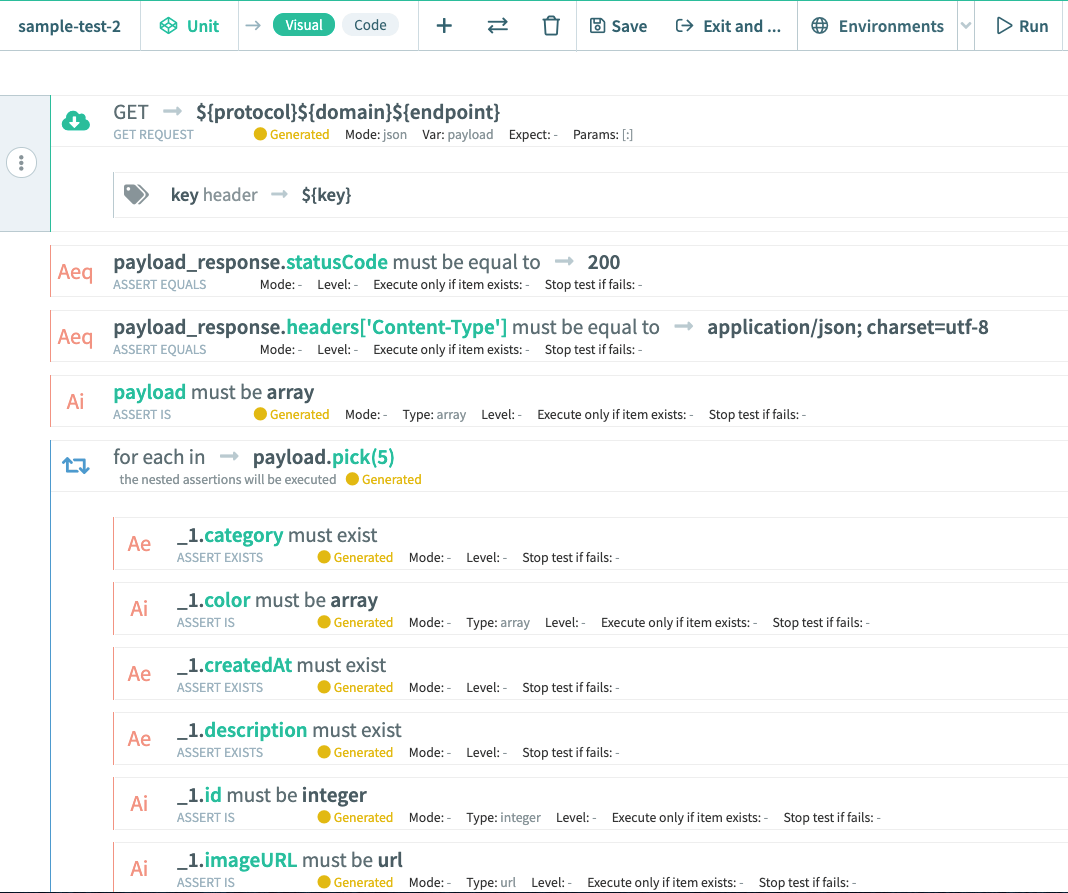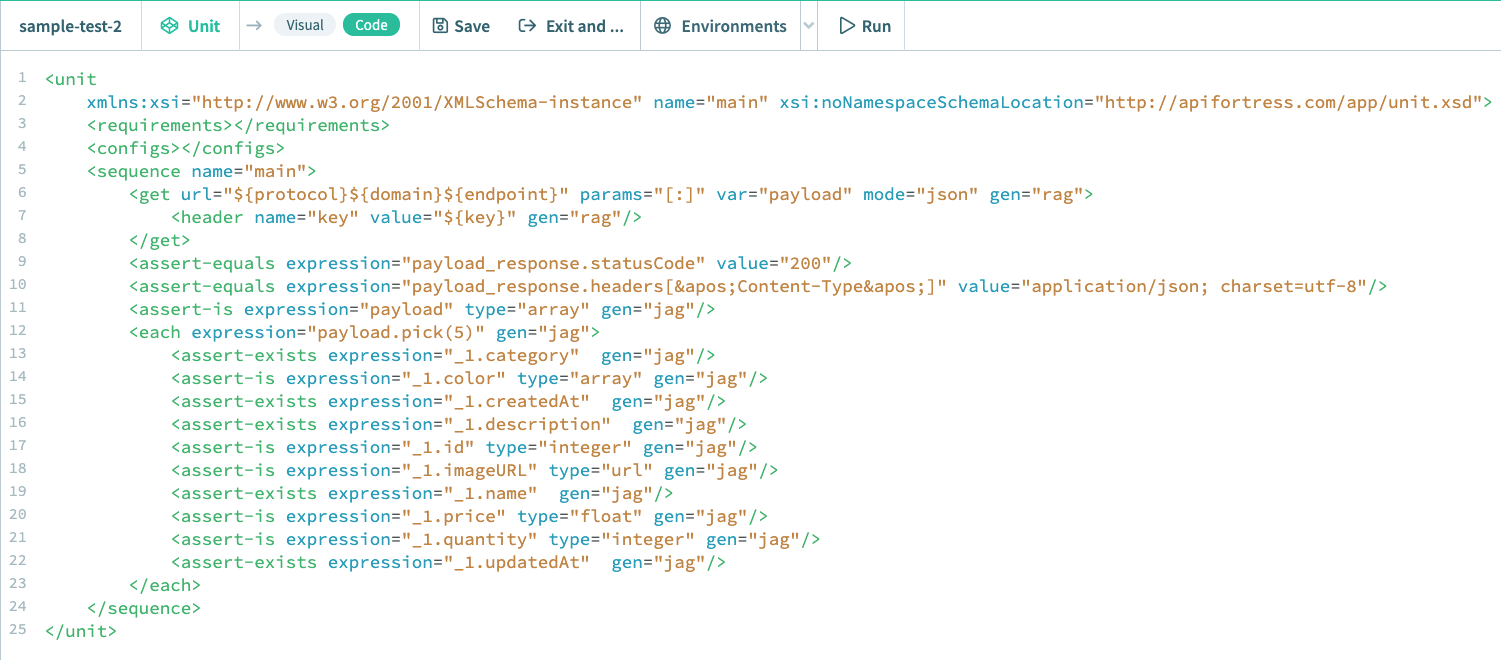Test Composer Guide
Legacy Documentation
You're viewing legacy documentation for API Fortress (deployed via an on-premises container). To view documentation for the new SaaS version of API Fortress — now known as Sauce Labs API Testing and Monitoring (with Sauce Connect tunnels) — see API Testing on the Sauce Labs Cloud.
The API Fortress Composer offers unparalleled flexibility and ease-of-use with everything at your fingertips to build tests in minutes and eliminate many duplicate tasks. Users of all skill levels may begin using the Composer with little or no training to quickly generate sophisticated functional tests. These tests may easily be reused as end-to-end integration tests and load (stress) tests. In turn, load tests may easily be reused as monitors for performance testing.
Read the following page to learn more about Integration / Multistep Testing
Visual vs. Code View
Begin using the Composer by selecting from two versions in terms of views. With either Visual or Code view, easily make calls and add assertions for testing your APIs, and insert variables wherever needed.
-
Visual - The Visual Composer does not require coding expertise, and provides real-time suggestions via predictive text to help you create ideal API tests for your needs.

-
Code - The Code view is for users who are more comfortable working in code rather than a visual UI.

Test Composer UI
Use the following image as a reference for the numbered items listed below:

1 - Add Request / Assertions
This is the Add Request / Assertions button, it can display all available components.

If a component is not valid for the operation you are conducting, it will not be made available to help avoid mistakes.
For instance, if you don’t add a POST first, you cannot add a POST Body or POST Param.
NOTE: Free accounts do not give you access to all available components.
Read descriptions of each component in the Reference section of API Fortress Documentation.
2 - Transform Component
This button allows you to easily transform an existing component into another component of the same type.
3 - Input Sets
Input Sets are a group of input variables representing a scenario. The test will be executed once for each input set, overriding the variable values into your test.
Global Parameters are variables that are available to be used throughout a test. Reference these variables simply by calling it within the test using the convention “${VARIABLE}”.

4 - HTTP Client
The HTTP Client is very similar to many other http clients out there. You can make GET/POST/PUT/PATCH/DELETE calls and see their responses. A key difference in our HTTP client comes from your ability to generate a test for the API you are calling right from there.
If you click the Generate Test button, the UI creates a test for you based on the API’s behavior and response.
See the screenshot below for details:

Additional Topics
Learn how to create a test quickly here.